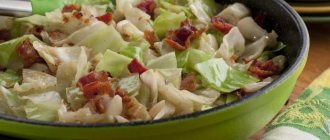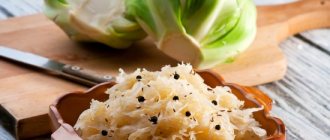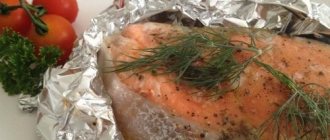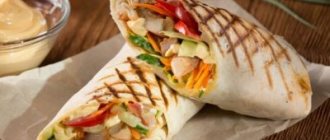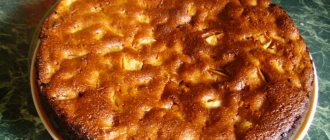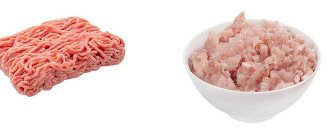Fried eggs - a dish for bachelors
One of the easiest to prepare and most common fried dishes is a fried egg. This dish, called scrambled eggs, can be prepared even by a person far from culinary. But not many bachelors think about how many calories are in a fried egg. For other people monitoring the nutritional value of foods, this information is important.
The energy value of a raw egg is 157 Kcal per 100 g of product. When frying in a frying pan with vegetable oil, its energy intensity increases almost 2.5 times. The calorie content of a fried egg is already 350 Kcal. If you fry a chicken egg in butter or lard, its caloric “weight” will be even higher.
A fried omelette, which is prepared by adding milk to the eggs, “weighs” about 184 Kcal per 100 g. This figure may increase depending on the presence of additional ingredients.
Energy value of products added to omelettes in cuisines of different countries
Scrambled eggs and omelettes contain all the benefits of chicken eggs. They are rich in lecithin, calcium, selenium, iron, lutein, potassium, and vitamins. The beneficial substances in these dishes help the normal functioning of the immune and nervous systems.
Ingredients:
- Buckwheat (kernel) - 1 cup;
- Water - 2 glasses;
- Salt - 1/3 tsp;
- Butter - ¼ of a pack (40−50 g).
- Medium oatmeal - 1 cup;
- Water or milk - 2.5 cups;
- Salt, sugar - to taste.
- Rice - 260 g;
- Water - 520 ml;
- Salt - to taste;
- Butter - 50 g.
- Pearl barley - 1 cup;
- Water - 2 l;
- Salt - to taste.
- Couscous - 1 glass;
- Water - 1.5 cups;
- Salt/sugar - to taste;
- Butter - to taste.
- Bulgur - 1 glass;
- Water - 2 glasses;
- Salt - to taste.
We invite you to familiarize yourself with the Transfer of a large size diet
Fried potatoes - a simple and tasty dish
The second most popular among fried foods is fried potatoes, whose calorie content is 192 Kcal (per 100 g). This dish has a simple preparation technology and does not require any special culinary skills.
To find out how much the calorie content of fried potatoes differs from its original state, you need to remember how calorie raw potatoes are. Its energy value is 79 Kcal per 100 g of product. It turns out that during the frying process it increases almost 2.5 times.
The undoubted advantage of potatoes is that even during processing they retain their nutrients, represented by fiber, carbohydrates (starch), proteins (albumin, globulin, peptone), pectic substances, organic acids (malic, citric, oxalic), vitamins, minerals substances.
It is correct to talk about the benefits of fried potatoes when consumed in moderation. If you overeat this product, its harm will be obvious, especially for people struggling with excess weight. It is also harmful to the pancreas of all people.
Fried rice with onions and carrots in a frying pan
For some reason, fried rice is cooked less often than stewed rice. But in vain, in fact, the dish will turn out to be very original and tasty. Boiled rice goes well with vegetable pasta - most importantly, don’t be afraid to cook new dishes.
Ingredients:
Cooking time: 40 minutes. 100 g serving of rice: 255 kcal.
How to cook delicious:
- Take regular short grain rice and rinse in three waters. Place it in a saucepan and fill it with clean water at room temperature in a 1:1 ratio. If you are afraid that the water will boil away, you can add a little. Pour a little refined oil into the pan and put on maximum heat;
- When the water boils, immediately reduce the heat to low and cover the pan with a lid or foil. Simmer rice for 20 minutes;
- Grind the onion, garlic, coriander, chili and carrots in a blender to a paste;
- Heat 35 ml refined oil in a heavy frying pan. Add pasta and cook over medium heat for 2 minutes;
- Pour the remaining oil into the frying pan, add the cooked and now cooled rice;
- Fry the rice until it is hot, then add the chopped green onions and cook for another minute.
Fried fish - pleasant taste and full of benefits
Another delicious dish is fried fish of various types. Fish products have long become part of the cuisines of all peoples of the world. The calorie content of raw fish, depending on the variety, varies from 80 to 300 Kcal per 100 g. With different processing methods, the energy value of this product will also differ. As for fried fish, the average energy value is 180 Kcal per 100 g. More precise values depend on the type and variety of fish.
Fried pollock, whose calorie content is 108 kcal, is an almost universal fish in cooking, having white meat, one of the lowest calorie content and an affordable price. In its raw form, its caloric “weight” is only 72 Kcal. The rest “come” during the frying process from oil.
Other types of fish are no less tasty and nutritious than pollock. The calorie content of all of them in their raw form is significantly different from that in the fried state.
The benefits of eating fish of any kind cannot be overestimated. It is a source of polyunsaturated fatty acids, protein, vitamins and microelements necessary for the body, the most important of which are calcium, phosphorus, and magnesium. River, sea, and ocean fish contain useful substances that are absolutely necessary for the normal functioning of the nervous, endocrine, immune and other systems of the body. Many lean fish are part of medical and weight management diets.
Fish is good to eat in any form. But everyone chooses their favorite way of preparing it. Those who are watching their figure and counting every calorie should avoid frying fish and prefer stewing and steaming.
Milk porridge for diarrhea, frequent loose stools
To prepare milk porridge for the treatment of diarrhea, in addition to milk, various cereals are used. Therefore, before starting cooking, you should analyze the properties of the selected cereal and its effect on the body of a person suffering from diarrhea. If the porridge is not prepared with soy milk, the interaction of the patient’s body with lactose-containing products must also be taken into account.
Peas have a strengthening effect, while stimulating gas formation in the intestines, so their use is contraindicated in case of diarrhea. It should be abandoned if the intestines are affected by infections, giving preference to drug treatment methods. In other cases, pea porridge, rich in proteins, vitamins and adsorbing harmful substances, is an excellent tool for cleansing the intestines and supporting the functioning of its small part. Due to the high probability of flatulence, pea porridge should not be given to small children.
“Fried chicken, fried chicken... fried!”
Fragrant fried chicken is one of the favorite delicacies of “meat eaters”. It is a healthy, tasty and affordable meat dish. The average calorie content of fried chicken is 200 Kcal per 100 g. But a characteristic feature of this dish is the uneven distribution of energy value in different parts of the chicken.
By the end of frying chicken in the skin, the energy value is distributed as follows (per 100 g of each product):
- breast – 110 Kcal,
- legs – 180 Kcal,
- wings – 192 Kcal,
- hips – 181 Kcal.
This difference is explained by the uneven distribution of fat in the chicken carcass. Chicken skin contains the most fat. Its calorie content is 212 Kcal. And all this fat saturates the meat during the frying process. Therefore, if you need to get dietary meat, you need to remove the skin before frying.
The calorie content of fried chicken also depends on the chosen frying method.
Breading the chicken adds extra calories as it absorbs a lot of oil. For example, the energy value of a fried chicken wing with breading is 250 Kcal, and without it - 192 Kcal per 100 g.
Fried chicken without skin and without oil is a dietary meat that does not harm the figure and condition of the body. Prepared by other frying methods, it may pose some “danger” to the body in the form of extra calories and harmful substances formed when the oil burns. Despite this, even fried chicken retains all the benefits of chicken meat. It is a source of protein (“building material” for the body), phosphorus, iron, potassium, magnesium, copper, and vitamins.
Fried mushrooms - indescribable taste and aroma
Another popular fried dish is mushrooms. They have a peculiar, unique taste, thanks to which they become a component of many salads, soups, cereals, stews and other dishes. Mushrooms cooked separately are no less tasty.
The calorie content of fried mushrooms is much different from that of raw mushrooms. Calories are “absorbed” into the mushrooms during the frying process along with the oil. Mushrooms themselves do not have very high nutritional value. Having a porous structure, they absorb large amounts of oil. By the end of frying, the energy value of fried mushrooms increases 2.3 times compared to the raw state.
The calorie content of fried mushrooms is affected by the method of preparation and the presence of additional ingredients.
Energy value of mushrooms fried in different ways (Kcal per 100 g)
Do not forget that different types of mushrooms have different calorie content, including fried ones. Fried champignons contain 50 Kcal, and porcini mushrooms - 162 Kcal of energy per 100 g of product.
Rice with carrots, onions, meat and garlic in the oven
This is an excellent dinner option for a large and friendly family. Just don’t forget to season the meat with herbs, garlic and spices when cooking – the result will be delicious. And be sure to add aromatic oil to the finished dish.
Article on the topic: How to cook cauliflower in batter
Required Products:
- 0.5 kg steamed rice;
- 0.5 kg pulp;
- 250 g fresh carrots;
- 3 heads of regular onions;
- 120 ml refined olive oil;
- 5 cloves of young garlic;
- 3 g black pepper;
- 10 g table salt;
- a handful of chopped dill.
Cooking time required: 1 hour. 100 g serving contains: 380 kcal.
Preparation:
- Mash the garlic cloves and pour in 60 ml of heated olive oil;
- Coarsely grate the carrots, onions and cut the meat into small cubes. Vegetables need to be mixed and fried a little in oil;
- Place the meat in a bowl. Season it to taste: salt, herbs, chopped garlic, freshly ground pepper;
- Divide the meat into approximately two equal piles. There should be three parts of vegetables;
- Place a vegetable layer on the bottom of the greased form, a layer of meat on it, and spread rice on top, then again vegetables, meat, rice, the final layer is vegetable;
- Carefully pour boiling water over everything on top, so that the liquid is 1 cm above the vegetable layer;
- Wrap the pan in foil and place in a hot oven for 35 minutes;
- Add aromatic olive oil infused with garlic to the finished rice;
- Turn off the oven and let the dish sit for about five minutes.
Roasted vegetables are both healthy and tasty
Any vegetables are the most important component in cooking. They are consumed in all forms: boiled, stewed, salted, fried and others. The importance of vegetables in the kitchen and for the human body cannot be overestimated.
Various fried vegetables are favorite dishes of millions of people. Each vegetable has its own indescribable characteristics, merging with other products into a whole symphony of taste.
People prefer different vegetables fried. And each of them has its own energy value. When fried, vegetables increase their calorie content compared to raw ones.
Energy value of raw vegetables (per 100 g, Kcal):
| Energy value per 100 g, Kcal |
| Eggplant |
| Green pea |
| White cabbage |
| Brussels sprouts |
| Kohlrabi cabbage |
| Red cabbage |
| Cabbage |
| Savoy cabbage |
| Cauliflower |
| Bulb onions |
| Sweet pepper |
Fried zucchini, whose calorie content is 88 kcal per 100 g, is a fairly popular dish among fried ones. If you fry zucchini with the addition of flour, garlic and other ingredients, their calorie content will increase significantly. The energy value of these vegetables prepared according to different recipes should be calculated taking into account the calorie content of the additives.
Another equally popular dish is fried eggplant, the calorie content of which is 107 Kcal (per 100 g of the finished product). This is 4 times higher than the energy value of raw “blue”. But these vegetables are not edible in their raw form, so it is necessary to choose one of the heat treatment methods. Many people choose to fry eggplant as their favorite way to prepare it. A common dish is fried eggplant with tomato and garlic. The caloric weight of such a “delicacy” is 130 Kcal for every 100 g.
Another common fried vegetable dish is fried cabbage. There are many varieties of cabbage, and almost all of them can be fried. The first thing that comes to mind is fried white cabbage, whose calorie content is 49 Kcal. If we compare it with fresh, then this value is 2 times greater.
Other varieties of cabbage suitable for frying are not inferior in taste and nutritional quality to white cabbage, and some are superior to it.
As can be seen from the table, when fried, all these vegetables acquire a higher calorie content than they had in their raw form. This means that people struggling with excess calories should give preference to another method of preparing these vegetables: stewing, baking, steaming.
How to cook rice with carrots, onions and tomatoes
Most often, carrots and onions are added to rice. But you can make it even tastier by adding tomatoes. Just first scald them with boiling water, peel them and chop them into cubes.
You will need:
- 200 g long grain rice (or 2 packets);
- onions – 2 heads;
- refined oil – 50 ml;
- medium carrots – 2 pcs;
- firm tomatoes – 150 g;
- fresh or dried dill;
- salt – 12 g;
- freshly ground black pepper – 3 g.
Time required: 25 min. One serving 100 g: 250 kcal.
Step by step recipe:
- If the rice is loose: rinse thoroughly, then fill it with clean water and cook for 20 minutes. To make the side dish crumbly, water should be taken in the following proportion: 1 part cereal + 1 part liquid;
- If the rice is in bags, then everything is much simpler. Boil it in salted water directly in the bags;
- Heat the oil in a heavy, deep frying pan and brown the finely chopped onion. Add coarsely grated carrots, simmer for a couple of minutes;
- Scald the tomatoes with boiling water and remove the skins. Peeled tomatoes can be cut into small cubes or pureed. Then add to the vegetables in the frying pan, stir and simmer for 5 minutes;
- Mix the dressing with the prepared rice, season with spices, pepper and, if necessary, salt.
Article on the topic: How to cook delicious shish kebab in the oven
Roasted sunflower seeds - impossible to stop eating!
And, of course, speaking about the calorie content of fried foods, one cannot fail to mention fried seeds. This is, rather, not a dish, but a whole entertainment. And for some, cracking seeds even turns into a habit.
Sunflower seeds are most often eaten. The second most popular are fried pumpkin seeds, the calorie content of which is 570 Kcal per 100 g. The calorie content in fried sunflower seeds is 520 Kcal.
Sunflower seeds are an extremely healthy product. They become a source of proteins (essential amino acids), fats, many vitamins, and unsaturated fatty acids. The seeds improve appetite, help restore the body after various diseases and tissue regeneration, and normalize the acid-base balance.
During the frying process, almost all the substances contained in the seeds are destroyed, and this product loses its original benefits. But many do not want to give up the unique taste of roasted seeds for the sake of their beneficial properties.
Today, you can cook pork in a variety of ways, since there are nearly a million recipes for delicious dishes using this meat. But everyone knows that it is quite fatty and high in calories. For those who follow a healthy diet, but also like to eat meat, it is very important to know how many calories it contains, especially if we are talking about the fried version. Next, we’ll look at this issue in more detail, find out all the nuances regarding calories, and also get acquainted with the beneficial properties of fried pork meat and its possible harm.
Calorie content of meat
The average kcal value per 100 grams of pork is approximately 285-290, but it depends on the method of preparing the meat, as well as on what part of the carcass the meat was selected from. The healthiest thing to eat is boiled and stewed pork, but sometimes, of course, you want something fried.
When adding fried pork to your diet, you need to consider the number of calories. Such awareness may serve as a warning to individuals who practice proper nutrition and exercise. So, depending on the type of meat, the kcal value per 100 grams can vary from 489 kcal to 495.
At the same time, the calorie content is significantly reduced if you add a minimum of sunflower oil when frying pork.
Pork ribs cooked in a frying pan are also considered quite high in calories, containing about 320 kcal per 100 grams. But, despite the large proportion of fat, pork ribs contain a large amount of protein, which is a definite plus. Sometimes the indicator decreases slightly if we are talking about a lean product.
A pork chop contains about 350 kcal, and sometimes more if the pork is grilled. But the calorie content of fried pork reaches as much as 524 kcal. Nevertheless, frying is very rich in B vitamins and contains potassium.
And of course, it’s worth mentioning the popular option of cooking pork with vegetables, including onions. This dish can reach 300 kcal. To reduce the indicator a little, you can serve not fried pork, but stewed pork, adding a delicious stew to it. If we talk about roast, then its indicator is 234 kcal per 100 grams.
Acceptable cereals during treatment of diarrhea
One of the main properties of rice that should be taken into account as a factor influencing the digestion process is stool consolidation.
Therefore, it is ideal for people suffering from diarrhea. Rice is a good sorbent, therefore it helps the body cope with the removal of toxins and wastes found in the intestines. Dishes with rice should be consumed regularly in order to maintain the natural balance in the gastrointestinal tract, rejuvenate the body, and improve the condition of the skin, nails and hair. At the same time, it is not recommended to eat it too often, since due to the binding properties of the cereal, it can produce the opposite effect to the desired one: cause constipation.
In cases where the occurrence of loose stools or severe diarrhea is caused by poor nutrition, too much fatty or spicy food, rice-based porridge can be eaten without fear of worsening your condition. It will help get rid of excess fluid and have an anti-inflammatory effect on the intestinal walls.
Young children are given rice porridge to eliminate diarrhea, diarrhea and to gently hold the intestines together. To prevent the baby from refusing to eat, the porridge is seasoned with raisins and honey. To prepare such porridge for diarrhea, rice (1 cup) should be thoroughly washed, raisins (80 g) should be poured with boiling water and left for a few minutes to swell.
Pour milk (5 glasses) and water (1 glass) into a saucepan, add salt. It is important to know that the amount of salt should correspond to your taste preferences, and not be excessive, since salt impairs the enzymatic activity of the intestines. Over-salted foods worsen diarrhea and promote fluid retention in tissues, causing swelling.
As soon as the liquid boils, pour the cereal into it, add raisins and sugar (4 tablespoons). After boiling again, the set heat level should be reduced to minimum and cook the porridge until the liquid has completely evaporated - about 40-50 minutes. Before serving, add a little butter and honey to the finished dish.
The enveloping properties of oatmeal make it an indispensable component of the diet when recovering from severe diarrhea, food poisoning and infectious intestinal diseases. Oatmeal copes well with inflammation, heals small wounds, and is also used for cosmetic purposes, namely as a face mask.
Buckwheat is one of the most healthy cereals, the use of which is allowed both during diarrhea and during rehabilitation after it. It can be included in the diet of both children and adults. Buckwheat stimulates intestinal motility, suppresses the manifestations of diarrhea and other intestinal disorders. If buckwheat porridge is consumed during or after diarrhea, in order to preserve the maximum amount of nutrients, it is better not to cook it in the traditional way, but to steam it with boiling water. Steamed cereal is given to children with intestinal upset, one tablespoon three times a day.
This porridge is one of the lowest in calories, but it contains a lot of gluten, which is an allergen; therefore, allergy sufferers should use it with caution. At the same time, wheat cereal contains a lot of carbohydrates and proteins and stimulates intestinal motility. It is allowed to be eaten for intestinal infections and diarrhea.
In young children, rather coarse wheat groats can cause indigestion, so before preparing porridge for a child, the groats should be ground approximately to the consistency of semolina. The adult body easily digests wheat porridge. It can be consumed as a single product, or combined with other cereals.
Loose stools always cause a lot of inconvenience. Every person wants to get rid of the disease as quickly as possible and uses various treatment methods. Medications against diarrhea and traditional recipes are used. An important role is played by proper nutrition, which can normalize stools and restore intestinal function. It is necessary to know what is included in the daily diet, what foods have a strengthening effect, so as not to harm the body during diarrhea.
This species does an excellent job of restoring intestinal function. To treat with oatmeal, you must follow some rules. It should not be served to small children. Since oatmeal is a complex carbohydrate, it is not recommended to eat it more than three times a week. Quite frequent use leads to weight gain.
Recommended for use after diarrhea to restore intestinal function. During constant diarrhea, the situation may worsen, since the product contains a large amount of fiber. Oatmeal has a cleansing effect, rids the body of toxic substances, coats the walls of the stomach and intestines, and prevents their irritation.
Rice porridge for diarrhea is the first product indicated in therapeutic dietary nutrition. Rice grains perfectly cleanse the body of waste and toxins. With the help of cereals you can eliminate morning diarrhea. It perfectly cleanses pathogenic microorganisms from the mucous membranes of the gastrointestinal tract, which has a beneficial effect.
We invite you to familiarize yourself with the Therapeutic diet of French nutritionists
There are several ways to prepare this product that can cope with diarrhea. Use viscous porridge cooked over low heat. Another method is to steam the grains with boiling water for 12 hours. Rice water is used for consolidation if the patient has no appetite, and also if the stomach and intestines are not ready to digest food. Mixing cereals is allowed, for example, rice goes well with a small amount of corn grits.
Cereals are not contraindicated for use in case of loose stools, but they should be eaten with caution. In the case of an infectious etiology of the origin of the disease, pea porridge is excluded, since the pathological condition can only worsen. At the time of exacerbation of diarrhea, grains will not be beneficial, but when diarrhea subsides, peas will perfectly cleanse the intestines of toxins. It will have a positive effect on intestinal motility and promote normal digestion.
This cereal is beneficial both in the normal diet and in cases of severe diarrhea. It perfectly neutralizes toxins without provoking an inflammatory process. The high content of vitamins and minerals will help replenish lost substances during chronic loose stools. Indicated for use by adults and children.
Refers to very useful products that can eliminate unpleasant symptoms. The grains have a fixing effect. By consuming this type of porridge, you can quickly cope with diarrhea. Not recommended for children, as grains are difficult for growing bodies to digest.
Barley and pearl barley
Barley porridge is strictly prohibited for consumption during diarrhea. The dish has a healing effect on the thyroid gland, but is not allowed to be eaten during periods of acute diarrhea and even when intestinal function is restored. Pearl barley porridge for diarrhea is enriched with many nutrients and beneficial substances for the body, but during the treatment of diarrhea and during the recovery period it is not allowed to be consumed.
When treating loose stools, it is necessary to know exactly the cause of the disease and direct the main therapy specifically to it. A proper diet will ensure a milder course of the disease, facilitate the functioning of internal organs, and promote a speedy recovery.
Corn, millet and wheat porridges are considered more useful. It is recommended to eat them 2–4 times a week, and corn up to 7 times.
The main advantages of corn porridge are its low calorie content and hypoallergenicity. The dish is easily digestible and can be given even to children. Thanks to amino acids, lysine and tryptophan, porridge strengthens the immune system, improves well-being and metabolism.
Corn porridge has few disadvantages: it is not suitable for people trying to gain weight; in exceptional cases, an allergic reaction to the product is possible, which is manifested by temporary slight redness of the cheeks.
Millet porridge is called cordial for its high content of potassium and magnesium. It is beneficial for the heart and blood vessels, indicated for atherosclerosis, and improves hematopoiesis.
The disadvantages of millet porridge include the short shelf life of the cereal: it quickly goes rancid. Millet is not recommended for people with low stomach acidity, constipation and hypothyroidism. Abuse of porridge can lead to decreased potency.
Wheat porridge is suitable for dietary and baby food; it has low calorie content. It is nourishing, nutritious, quickly restores strength, strengthens the body and immunity. Recommended for people who want to lose weight, experience prolonged physical activity, or take antibiotics.
Porridge has few negative properties: people with gastritis and other diseases associated with low acidity should not abuse it; You can't eat porridge if you have celiac disease.
The three most popular porridges are considered champions in terms of the number of valuable elements: rice, oatmeal and buckwheat. In order for these dishes to bring the greatest benefit, it is enough to eat them 3-5 times a week. Deciding which porridge is the healthiest is not easy.
We invite you to familiarize yourself with Diet every hour water with cards
Brown, brown rice is considered the healthiest, but it is not always found on store shelves and is more expensive. Unpolished short-grain rice is excellent for preparing porridge, as it retains a shell rich in nutrients. The cereal contains vitamins B, E, PP, H, fiber, proteins, amino acids, starch, iron, iodine, zinc and other substances. It contains virtually no fat.
How to choose?
For frying, it is best to choose soft pork. In addition, it must be fresh, so you should buy it only in trusted places with a good reputation. Preference should be given to meat with small layers of fat, since fat increases the calorie content of the product, especially fried ones.
Tenderloin, as well as meat from the back, is perfect for frying. It is ideal for frying schnitzels, chops and cutlets. By the way, cutlets are considered lower in calories compared to, for example, steaks. Meat from the hip and the ham itself are also great for frying. In this part, the meat is not as soft as in the lumbar part, but the taste is no worse. There is practically no difference in calories.
It is best to cook fresh and chilled pork at home. This way it will be more juicy in the pan.
Benefits and harms
Despite the fact that pork is considered quite high in calories, it is well absorbed by the human body, especially if you prepare low-fat varieties and consume them in small quantities.
Pork is incredibly healthy, even if we talk about the fried version, since it contains useful amino acids, proteins and vitamins of various groups.
If a person follows a balanced diet, then fried meat will not be dangerous for him.
However, older people should treat this meat with great caution, since frequent consumption of fried pork can contribute to the exacerbation of chronic diseases, as well as the occurrence of inflammation in the body.
In general, pork meat can be of great benefit to a person, but if there are any abnormalities in the body, it is best to consult a nutritionist, and, if necessary, a gastroenterologist.
For the pork recipe, watch the following video.
